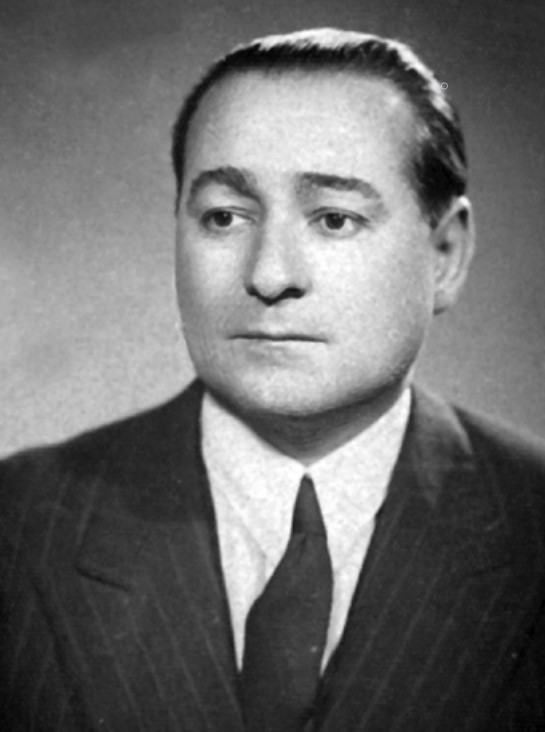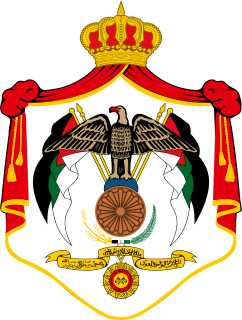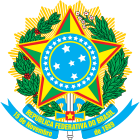The Liberal Party, commonly known as the Blue Party was a political party in Paraguay, ruling the country for most of the period between 1904 and 1940.
The Russian Party in Estonia was a minor political party in Estonia.

General elections were held in Venezuela on 1 December 1963. The presidential elections were won by Raúl Leoni of Democratic Action, who received 32.8% of the vote, whilst his party won 66 of the 179 seats in the Chamber of Deputies and 22 of the 47 seats in the Senate. Voter turnout was 92.3% in the presidential election and 90.8% in the Congressional elections.

General elections were held in Puerto Rico on 5 November 1996. Pedro Rosselló of the New Progressive Party (PNP) was re-elected Governor, whilst the PNP also won a majority of seats in the House of Representatives and the Senate. Voter turnout was between 80% and 82%.

General elections were held in Mexico on 5 July 1970. The presidential elections were won by Luis Echeverría Álvarez, who received 86.0% of the vote. In the Chamber of Deputies election, the Institutional Revolutionary Party won 178 of the 213 seats, as well as winning all 64 seats in the Senate election. Voter turnout in the legislative elections was 64.4%.

General elections were held in Turkey on 12 October 1969. The electoral system used was party-list proportional representation using the D'Hondt method in 66 electoral districts. The result was a victory for the Justice Party, which won 256 of the 450 seats. Voter turnout was 64.3%.

General elections were held in Turkey on 21 July 1946, the first multi-party elections in the country's history. The multiple non-transferable vote electoral system was used. The result was a victory for the Republican People's Party, which won 395 of the 465 seats.

General elections were held in Turkey on 14 May 1950, using the multiple non-transferable vote electoral system. The result was a landslide victory for the opposition Democratic Party, which won 408 of the 487 seats.

General elections were held in Turkey on 2 May 1954.The electoral system used was the multiple non-transferable vote. The result was a victory for the Democrat Party, which won 503 of the 541 seats. Voter turnout was 88.6%.

General elections were held in Turkey on 27 October 1957. The electoral system used was the multiple non-transferable vote, with each electoral district electing an average of 9 members. The result was a victory for the Democrat Party, which won 424 of the 610 seats.

General elections were held in Jordan on 29 August 1951. As political parties were banned at the time, all candidates ran as independents, although some affiliated with the Jordanian Communist Party, the Ba'ath Party the Arab Constitutional Party and the Umma Party all won seats.

General elections were held in Puerto Rico on 6 November 1956. Luis Muñoz Marín of the Popular Democratic Party was re-elected as governor, whilst the PPD also won a majority of the vote in the House of Representatives elections. Voter turnout was 80.4% in the gubernatorial elections and 80.3% in the House elections.

General elections were held in Puerto Rico on 8 November 1960. Luis Muñoz Marín of the Popular Democratic Party was re-elected as governor, whilst the PPD also won a majority of the vote in the House of Representatives elections. Voter turnout was 84.6%.

General elections were held in Puerto Rico on 3 November 1964. Roberto Sánchez Vilella of the Popular Democratic Party was elected Governor, whilst the PPD also won a majority of the vote in the House of Representatives elections. Voter turnout was 83.8%.

General elections were held in Belgium on 26 May 1929. The result was a victory for the Catholic Party, which won 71 of the 187 seats in the Chamber of Representatives. Voter turnout was 94.0%.

General elections were held in Brazil on 3 October 1994. The presidential elections were won by Fernando Henrique Cardoso of the Brazilian Social Democracy Party, who received 54.3% of the vote. Cardoso won the election by a margin of 27.3%, the largest in Brazilian history to date, and the first of his two landslide victories. The Brazilian Democratic Movement Party remained the largest party in the Chamber of Deputies and the Senate.

Presidential elections were held in Colombia on 10 February 1914. They were the first direct presidential elections since 1860. The result was a victory for José Vicente Concha of the Conservative Party, who received 89.1% of the vote. Vicente took office on 7 August.

Presidential elections were held in Colombia on 9 February 1930. The result was a victory for Enrique Olaya Herrera of the Liberal Party, who received 44.9% of the vote. He took office on 7 August.

Presidential elections were held in Colombia on 11 February 1934. The result was a victory for Alfonso López Pumarejo of the Liberal Party, who received 99.6% of the vote. He took office on 7 August.

Parliamentary elections were held in Colombia on 16 March 1958 to elect the Senate and Chamber of Representatives. They were the first elections held under the National Front agreement, which only allowed the Conservative Party and the Liberal Party to contest the elections, and allocated 50% of the seats in both houses to each party. As a result, the main contest at the elections was between factions within each party.














